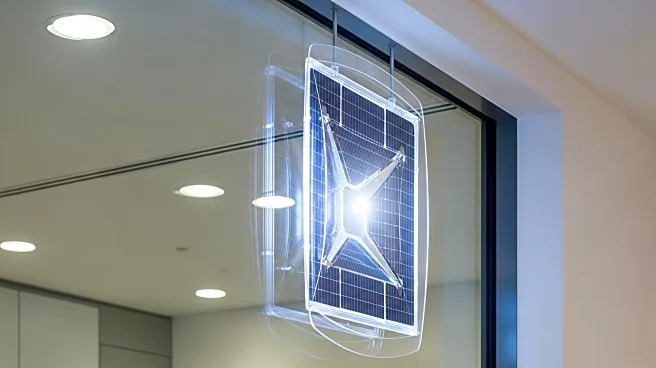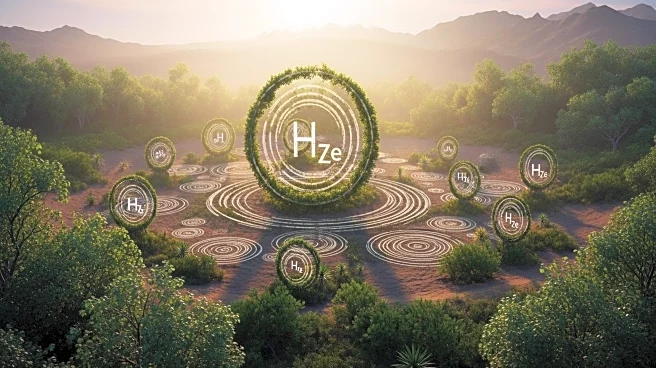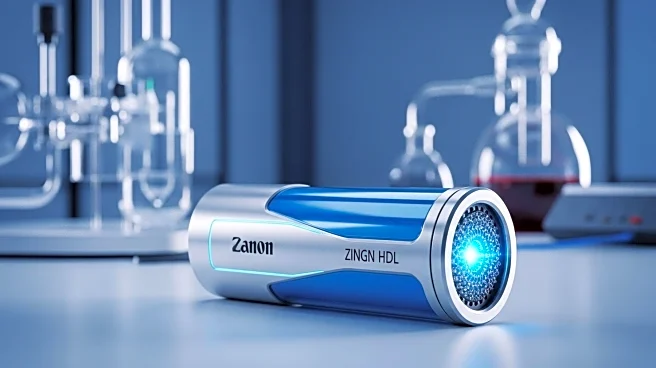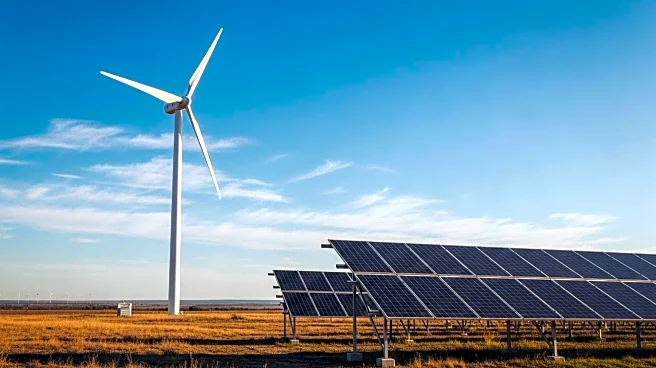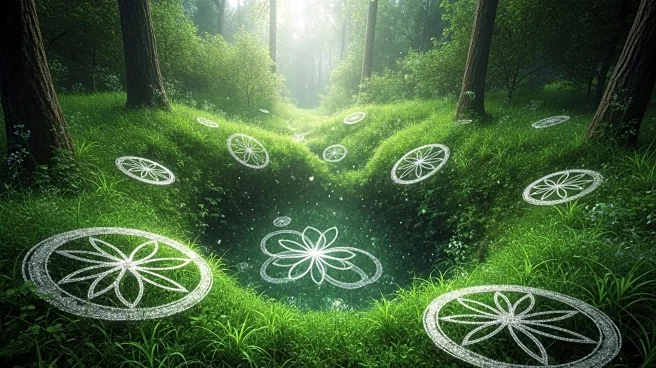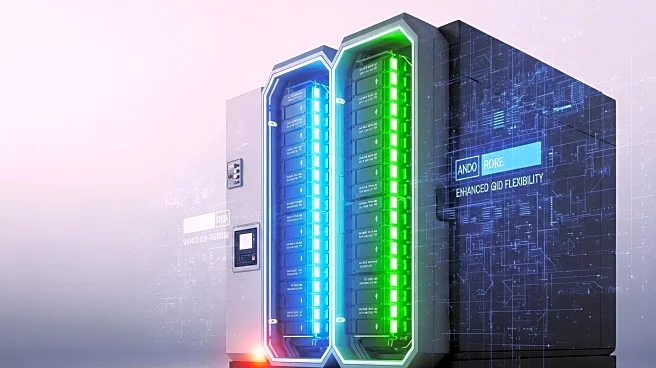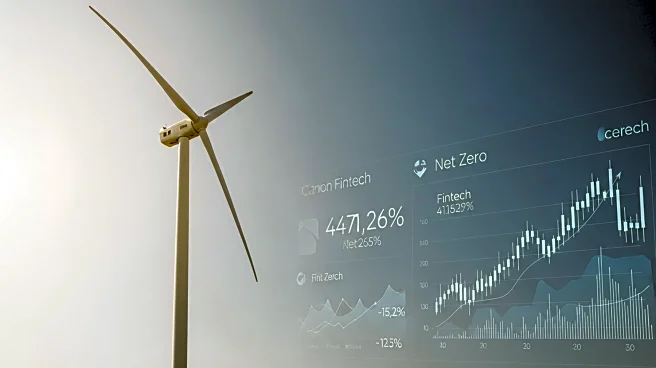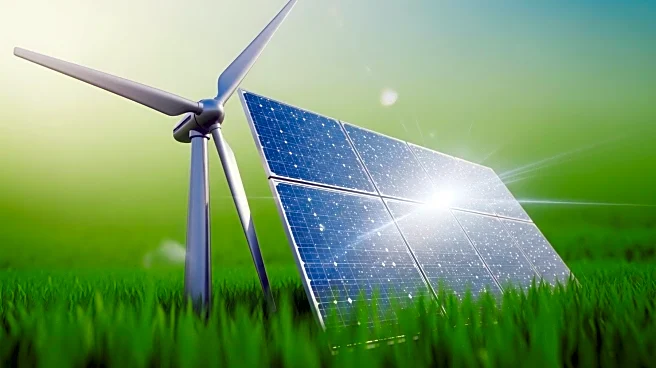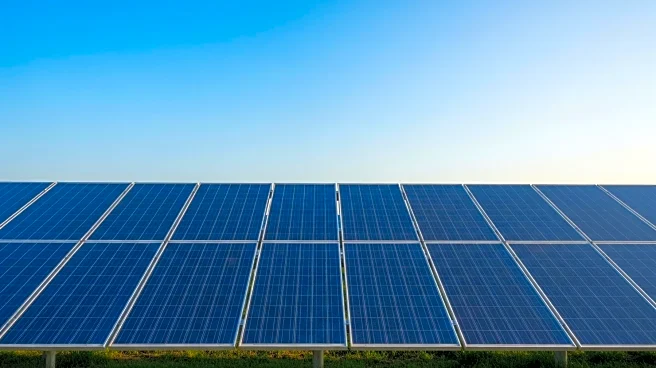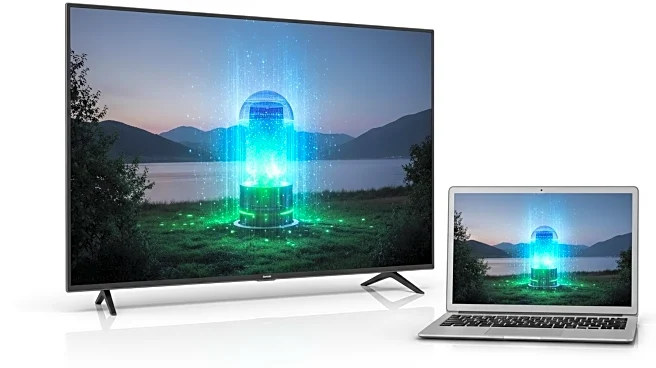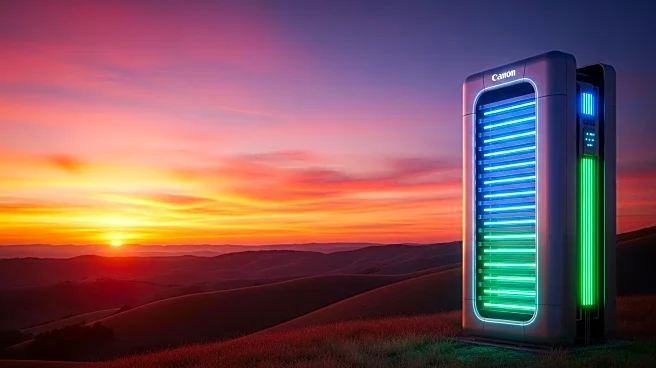What is the story about?
What's Happening?
Researchers at Nanjing University have developed a transparent, colorless solar concentrator that can be applied to standard window glass. This innovative device, known as a cholesteric liquid crystal (CLC) multilayer concentrator, guides sunlight to the edges of windows where photovoltaic cells are installed. Unlike traditional solar concentrators, this new technology maintains high visual clarity and efficiency, with an average visible transmittance of 64.2% and a color rendering index of 91.3. The concentrator can collect up to 38.1% of incident green light energy, significantly reducing the number of photovoltaic cells needed. The system is scalable and can be retrofitted onto existing windows, offering a sustainable solution for urban energy generation.
Why It's Important?
This development represents a significant advancement in integrating solar technology into urban environments without compromising aesthetics. By reducing the need for photovoltaic cells, the concentrator offers a cost-effective and efficient method for generating clean energy. The ability to retrofit existing windows with this technology could lead to widespread adoption in cities, contributing to carbon reduction and energy self-sufficiency. The research highlights the potential for solar technology to become a seamless part of everyday infrastructure, promoting sustainable energy practices.
What's Next?
Future research will focus on improving the broadband efficiency and polarization control of the solar concentrator. The team plans to adapt the technology for use in agricultural greenhouses and transparent solar displays, expanding its applications beyond urban settings. Continued development could lead to more versatile and efficient solar solutions, further integrating renewable energy into various aspects of daily life.
AI Generated Content
Do you find this article useful?
